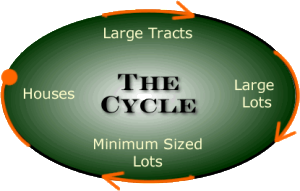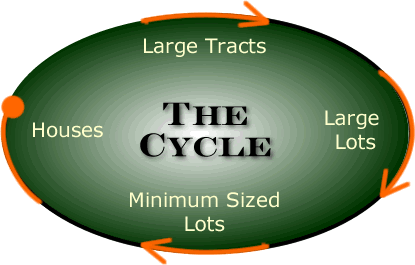There are LOTs of folks considering making the move to Costa Rica and the southern Pacific zone in particular. It reminds me in some ways of the booming days of 2004 when I first got into real estate. I think that we are at the beginning of something.
There is always the tendency to feel like we’ve “missed it”, that the “good ole days” are gone and so, now…? Well, to put it in the words of Carly Simon, these are the good ole days. These are the days that we’ll look back on in the years ahead as a time of beginning.

Granted, there is a history here that has examples of people buying property for a song, and making $120 to their $1.00 of initial investment. Those were indeed some heady times. They are gone.
It feels now like a cycle has completed and we are in the beginning of a new one.
The real estate cycle has repeated itself in numerous parts of the world. “Real estate” starts off as large tracts of land which are owned or stewarded by a family or group. These are frequently dependent on the land for their food, read: agrarian (farmers).
Time continues to move forward and the use of land changes. It may go from agrarian to commercial, or tourism, or tract housing etc… Grocery stores have played an enormous role in human history. Looking to a store, instead of what we can individually or communally raise from our own land was a huge change, and is the system that most of us are now familiar with.
The large tracts get cut up into smaller plots and sold off. The increased value of the land is compelling and the original owners of the land are moved by the large chunks of money that can be made in this way.
2004 in Costa Rica here in The Zone was at the part of the cycle where there were still some large tracts of land, although most of the prime ones had been sold. The buyers of those tracts were reaping huge benefits as the use of land was changing from agrarian to private homes and tourism. A fellow who had inherited, or received via land grant say, 60 acres of ocean view land, and who has been living on and farming the land for years with his family and was perhaps even raised on the land, now finds a foreigner at his doorstep with a wad of cash in his pocket, and he’d like to buy the land. This is an historical moment, and it is one that has repeated itself around the planet ad nauseum.
So, the 60 acres gets sold for $100,000 and is then cut up into 5 acres lots that will then be sold for $40,000 to $60,000 per. $50k x 12 = $600,000. Gross profit on a $120k investment: $500,000.
This is just an example and there are some such examples from the early days that go way beyond these numbers. This one is based on what I was seeing in 2004.
By law, these 5 acres lots could be cut into 4 pieces of 1.25 acres, the minimum size permitted for a property that is not on a public road. So, the buyers of these lots would proceed to do so. They would cut off a lot or two, and in many cases, recoup their initial investment from the sale of one lot. This was the dream Costa Rica scenario that was the norm at that time.
The result was the Costa Rica real estate cycle was progressing through the stages of growth & “progress”.
At that time, most of the people that would walk into my real estate office would say that they wanted to buy a house. After spending some time looking at the available houses, they would end up buying land that that didn’t have a house on it.
I determined a rather interesting bit of data then. Most people want to buy a house. They did not want to go through the process of building in Costa Rica. But, more than wanting to buy a house, they wanted to buy & own – something.
Back in the day, The Zone was full of unique, slightly out of round folks. Any houses that existed at that time were expressions of individualism and were eminently difficult to sell.
So, after looking at the meager offering of houses on the market, the prospective buyers would default over to the purchase of raw land and the prospect of building on that raw land.
The vast bulk of our real estate business at that time was the sale of raw land.
Now things have changed. The cycle has continued on. There are not many plots of ground where the old “dream” scenario can happen. The land size may well now be at its minimum size due to legal restrictions, covenants that restrict further sub-dividing, or topography. There is also an inventory of houses here.
I view last season (the 2003 dry season) as a turning point in real estate. We were at the end of the global recession. People were feeling a bit flush and optimistic for the first time in 5 years. Interesting thing, they were still saying the same thing as previously: “I want a house”. Now things were different than in times past. There was an inventory of houses, and these were not the expressions of individuality of times past, but middle-market homes that would appeal to the sensibilities of the prospective buyer.
The high season of 2013 saw a tremendous uptick in the sale of developed properties. Going into the season saw quite a number of hotels on the market, as well as a good selection of houses. The hotel sales from that season were impressive, and the sale of houses ranging from $150,000 – $2.400,000 happened and the inventory was largely mopped up.
As the 2014 season starts up, I see a return to the days of yore. There simply aren’t that many houses on the market, and certainly in the bread-basket range of $150,000 – $$400,000, there is a notable lack of product.
I suspect that we will again see that what people want, first and foremost, is to own something here. I think that we will see them asking for a house. Some will find what they are looking for, but many will purchase a piece of raw land.
The cycle continues, and understanding this cycle will help one to make educated decisions when it comes to buying land here in Costa Rica’s southern Pacific zone.
